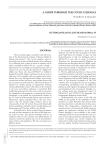Статьи журнала - Вестник Международной академии наук (Русская секция)
Все статьи: 360
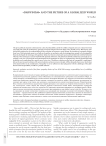
"Darwinism" and the future of a globalized world
Статья научная
The given political situation is dominated on a loss of predictability and of the validity of signed contracts. Classic Darwinist can justify this with the evolutionary principle of natural selection that the fittest will/ should survive. But Darwin relativized this position for the understanding of the evolution of humans as social beings. He introduced “sympathy distinct from love”. Both principles seem to exclude each another as mechanics and electromagnetism seemed to be incompatible. Einstein developed the technique of hypothetic - deductive theories of principle and could interlink both with the Relativity Theories. This technique is used to interlink both positions of Darwin. The joint basis of both evolutionary principles is surprisingly “win - win”. Its principles are demonstrated on the metaphor of chess. It is explained why also the genetically based evolution can be understood as a special case of “win - win”. Therefore, evolution on the basis of “sympathy” is understandable as the next step of evolution with natural selection as the precursor principle. All the demands of precursor levels have to be taken further on in consideration. “Sympathy” is never sufficient to deal adequately with the challenges of the globalized world. Responsibility would be a possible solution.
Бесплатно
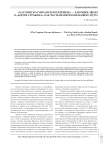
Статья научная
В статье, опираясь на античные письменные исторические источники, картографические, геологогеофизические и природноклиматические сведения, был предложен новый взгляд на древнюю историю Каспийского моря и Прикаспийской Ойкумены. Было установлено, что в древности, Южно-Каспийскую впадину отделял от Среднего и Северного Каспия сухопутный перешеек, который, в результате изменений уровня воды и тектонических процессов, периодически погружался под воду. Именно этот перешеек, по мнению автора, являлся тем самым коротким пу тем от Азии до Европы, через Каспийское море, о котором писал в своих трудах Страбон.
Бесплатно
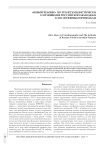
"Новый человек" по трансгуманистически и отношение российской молодежи к его основным признакам
Статья научная
В статье рассматриваются черты «трансчеловека», которые должны изменить природу человека в будущем и стать ступенью к «постчеловеку», идеал которого представлен в трансгуманизме. Приводятся данные исследований, проведенных среди молодежи в различных территориях России в 2016/2017 и 2019 г. и показывающих, что и в этой категории населения, считающейся наиболее открытой для экспериментов с человеком, нет единства в отношении оценок ожидаемых в трансгуманизме признаков «транслюдей».
Бесплатно
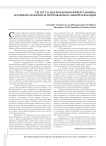
110 лет со дня рождения Норберта Винера: научный симпозиум по проблемам самоорганизации
Рецензия
Бесплатно
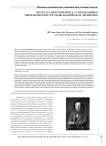
150 лет со дня открытия Д. И. Менделеевым периодической системы химических элементов
Статья научная
2019 год объявлен ЮНЕСКО годом Периодической системы элементов Д.И.Менделеева. 150 лет тому назад выдающийся российский ученый Д.И.Менделеев систематизировал существующие тогда химические элементы по химическим свойствам и создал систему элементов. С тех пор к существующим шестидесяти химическим элементам добавилось почти столько же. Сейчас таблица насчитывает 118 химических элементов, большинство из которых были синтезированы искусственно, в том числе и на ускорителях заряженных частиц. Особенно бурный всплеск синтеза и исследования новых тяжелых трансфермиевых элементов произошел в последние 20 лет, когда в различных мировых научных центрах, имеющих мощные ускорительные комплексы, было синтезировано около 20 новых тяжелых и сверхтяжелых элементов. В представленной статье авторы обсуждают современную ситуацию по синтезу новых элементов с порядковым номером больше 110 и перспективы дальнейшего продвижения в область сверхтяжелых элементов
Бесплатно
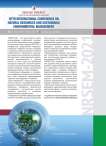
5-я Международная конференция "Природные ресурсы и управление устойчивым развитием"
Другой
Бесплатно
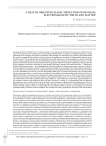
A health oriented characterization of big bang, electromagnetic fields and matter
Статья научная
The proposal of the «Extended view» of a human person as a biopsychosocial being and its interactions with his/her different environments for the comprehensive understanding of health, illness, recreation and wellbeing is based on a special application of the technique for theories of principles. This technique was developed by A. Einstein to link indispensable but actually incompatible theories Basics and the relevance of paradigms are presented as indispensable fundament of any scientific activity. The technique had to be modified for the health-oriented use. The prerequisite for a theory of principle can be a jointly accepted term but with not fully identical contents. The acceptance of one evolutionary process is such a position for all health related scientific disciplines. But the principles «behind» evolution are different according to the different paradigms to make the evolutionary process plausible; Emotional, cognitive and intellectual effects - additional to physical and biochemical ones - are indispensable for the understanding of a human person but are not part of the phenomena of physical or chemical entities or of the evolutionary model e.g...
Бесплатно
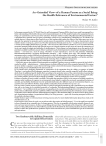
Статья научная
In the paper presented to the 12th World Clean Air and Environmental Congress 2001 in Seoul a new model was proposed for a better understanding of the health relevance of environmental disasters (1, 2): This model is based on the assumption that any being is an «autonomous actor» because of its «potentia». «Potentia» enables to realise self guided and self organised effects. It is postulated, that «potentia» has two aspects («potentials») which are in a complementary relationship (acc. to N. Bohr): If an outside observer is observing an effect based on one of the (unobservable) aspects the effects of the other aspect can not be observed. One potential is commonly used in natural science: the potential for activities which can be characterised in terms related to matter or energy (e. g. power etc). The other potential is obviously given too, but - maybe because of extra-scientific reasons as I described in the literature (3, pp 15ff) - there is no term to deal with it in a similar way as we are used to deal with energetical potential (fields, physical and chemical powers etc). Natural scientists use only terms to express the consequence of its use: e.g. to speak of antigens and antibodies, of conditioning etc. This technique is as long adequate, as e.g. the capacity of the potential is available in sufficient amount. If there would not be such a limited potential we should expect changings in the phenomena - not based on a lack of energy. Therefore we have introduced a term for this potential: «Ordnendes Diskriminationspotential» («arranging discrimination potential» - still a working term only). This potential allows the autonomous actor to «make a difference to information», to «deal with information» and to guide its «energetical potentials» e. g. to repair mechanisms. Then we postulated characteristics so that experimental proving is possible: e. g. «Potentia» and therefore both «potentials» are postulated as restricted and restricting. There are different consequences: a) The «potentials» allow attributing to the «autonomous actors» a process we call «evolution». - Within this process the qualities of both potentials are modified. Therefore terms are needed to express the level which is reached (e. g. field - physical powers - chemical powers to distinct different levels of the energetical potential). We propose the term «ability to organise» to name the level of living entities to deal with information («Organisationsvermögen»). (More details to this process will published in this journal soon (4). b) We should expect changing phenomena in consequence of the assumption that the «ability to organise» is limited: Therefore it was predicted that inadequate capacities to organise should cause causally unspecific health effects independently from the additional specific health effects according to the particular nature of the external stimulus: Assuming that the amount of organisational capacity of an organism is limited, any additional demand on this capacity will negatively influence existing adaptive processes in their attempts to establish - with the consequence of more severe symptoms.
Бесплатно
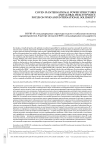
Статья научная
For decades, virtually all parties with political or medical responsibility for pandemic issues have stressed the need for more intensive inter-national cooperation. COVID-19 is only the latest epidemic for the time being to demonstrate the massive discrepancy between rhetoric and reality in this regard. A global health policy worthy of the name still does not exist. The WHO and its sub-organizations have neither the competencies nor the financial resources to live up to their claim proclaimed by the community of states. Against the backdrop of the crisis created by the spread of SARS-CoV-2, this article asks what the pre-conditions and determinants of this failure are. First, it illuminates the ideological and political patterns that shape the strategic thinking and actions of those major powers that command global health policy and other aspects of global governance. The following section discusses the resulting (malfunctioning) structures for addressing epidemics and diseases, which are also barriers to the development of comprehensive health systems. Thirdly, the implications for the possibilities of addressing the COVID pandemic and also helping those countries and regions of the Global South that have neither the financial resources nor the tools of the rich North are discussed. In this context, we will take a look at the role of the EU and Germany and their programs and practice of global health policy. Germany, after all, held the presidency of the Union in the second half of 2020 — amid the pandemic. The last part deals with the role and influence of an increasing «neoliberalization» of the health care system, especially since the 1990s, and the impacts for research and development, as well as with a pharmaceutical industry that primarily follows market laws and only secondarily health maxims. Under this aspect, the «vaccination race» between and within the EU and other actors is considered. Simultaneously, the question is raised whether and to what extent there are chances to steer the unsatisfactory state of affairs in a direction that enables better disease control on a regional and global scale through international cooperation and strengthened institution building.
Бесплатно
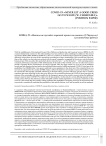
COVID-19: «Never let a good crisis go to waste (W. Churchill)» (position paper)
Статья научная
With the establishment of International Science-Policy Platform on Biodiversity and Ecosystem Services (IPBES) the UN created a fundamental extension in the understanding of current and future policy challenges: In addition to the sectoral approaches (WHO, UNEP, UNESCO, UNIDO etc.), there was a need for an institution that evaluates the problems and the options for solving them in terms of their appropriate contribution to future sustainability. This succeeds best if the positions of the «others» are also taken into account with the special «sympathy» recognized by Darwin as a trait of advanced human person. If this succeeds, then particularly diverse networks form — as if by themselves — with surprising positive ecosystem performance and quality of life. Unfortunately, if the needs of the involved actors are not taken into account enough, surprising adverse consequences can also be expected. Thus, for these reasons, we are in an era of pandemics because too little attention has been paid to the individual habitat needs of wildlife and people. COVID-19 is just one of the possibilities: Over 800,000 other virus species could lead to more pandemics in the short term. This existential threat was not even an argument for the creation of IPBES. Today, it affects the daily lives of virtually everyone. Nevertheless, it is to be expected that the logically reasonable rebalancing in decision-making processes will fail in practice due to countless arguments that seem superficial in the short term. However, the personal involvement of COVID-19 gives hope that the pressure of the catastrophe will make it possible for the changeover process to be started in concrete terms. But additional measures must be taken if COVID-19 is really to be the last pandemic. To this end, the current defining approach of preventing contact between the infectious and the infectable until the world's population is vaccinated, as important as that access is, is not enough. But, for example, without exploiting the possibilities of activating viruses in the environment and, in particular, systematically exploiting the possibilities of non-specific defense, it will not be possible to end the pandemic
Бесплатно
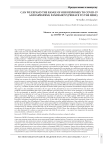
Can we expand the range of our responses to COVID-19 and impending pandemics? (Preface to the issue)
Статья научная
The COVID-19 pandemic has already caused individual and societal health, economic consequences worldwide like no other event since the end of WWII. What is still to come to mankind, e.g. as a result of mutants, cannot be seriously predicted. The forecasts, which have been predicting mantra-like for a year that we would live again in three weeks like in 2019, if only we all strictly comply with all conditions, are so unsatisfactory that the demand for a new U.S. facility has been raised — linked with the demand to also question the entire strategy. Are we really prepared for the next — and be it artificially produced — SARS-CoV2-mutants as well as would be possible with the scientifically available means? And how do we prevent the next pandemic with an as yet completely unknown pathogen? These questions are addressed in this article, various articles in this issue, and the planned focus issue. The approach currently adopted by governments worldwide assumes that any epidemic can be prevented if contact between infected persons and all infectious persons is prevented in an ideal manner. These measures must be enforced by any means necessary until the (world) population has been immunized by vaccination to a sufficient extent and on a permanent basis. From a theoretical point of view, this seems conclusive. But is this feasible in our non-ideal world and with which consequences? In addition, it is questionable to what extent it corresponds to reality if no reference is made to the individual influences of the relationship between the virus and the cells to be infected as well as their influenceability by personal social, cultural, economic, etc. factors. Influencing variables are not referred to. It is possible that these hitherto unconsidered areas provide options for additional protective measures. Taking into account the classical knowledge of physiology, epidemiology, social medicine and humanitarian science, it seems necessary to assume dynamic and modifiable processes extending over several levels of different «age» from an evolutionary point of view. This needs to be taken into account: This issue therefore presents some contributions for relevant sub-aspects, e. g., on basics of non-specific physiological processes and the different relevance of identical stresses depending on e. g., circadian rhythms, holistic principles of human health preserving, formation of individual ecological culture. This paper is also intended to introduce the two parts of the planned focus issue on COVID-19: Part one deals with problem-oriented possibilities that open up the different processes from occurrence of the pathogen via transmission in the environment to possible contact between infected and infectable person as a prerequisite for the possible approach of an infection of a cell e.g. of the nasal mucosa and further to a possible disease with different outcome. Major conclusions leading to a fundamental expansion of options in the fight against SARS-CoV-2 (and other pathogens) and COVID-19 are presented. They go beyond the proposals that are now available and that have been put forward as solutions from different approaches, e.g., by the S20 or the Independent Panel Each approach claims to be suitable to end the «Era of Pandemics». None makes reference to other «global solutions». One reason for this is seen in the fact that the different disciplines are not interconnectable for methodological reasons. However, the meaningful ness of these approaches would be greatly enhanced if the different approaches could be understood as subsets of a common basic set. Einstein proved that this can be achieved in practice with the technique of principle theories. The second part of the special issue is devoted to this approach for COVID. There, the relevance of the individual processes is also discussed: it is always a concrete person who falls ill, not society — no matter how important the societal, social, economic, cultural, etc. factors are.
Бесплатно
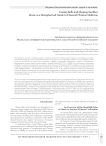
Casting bells and shaping needles: music as a metaphorical guide in classical Chinese medicine
Статья научная
The use of concepts and metaphors originated from ancient musical theories is an important feature of the theories that base the early practice of acupuncture in China despite being neglected by modern textbooks. In this paper, we highlight how concepts and ideas originated from the ancient musical theories influenced and contributed to shape the discourse of acupuncture theories in Huangdi Neijing 《黄帝内经 》 (HDNJ). We correlate musical metaphors and medical theories when investigating the Yellow Bell (Huangzhong-黄锺), a metaphor from an important musical concept that is also an ancient musical instrument and appears in one important passage of the text of chapter 78 of HDNJ Lingshu - On the Nine Needles《黄帝内经.灵枢经》《九针论》 when explaining the choice of the number nine as the primordial number of shapes for the classical acupuncture needles. This exemplifies the central role that ancient Chinese musical theories and its metaphors- embedded in the discourse of HDNJ- play in the construction of the early theories and practices of Acupuncture and Chinese Medicine.
Бесплатно
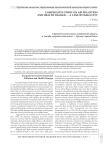
Comparative study on air pollution and health damage - a case of Osaka city
Статья научная
In this study, a trend analysis was conducted using the interannual data of measured values of sulfur dioxide in the air and the number of officially recognized victims of pollution - related diseases, in Osaka City, in order to clarify the health impact of air pollution. As a result, it has been shown that the number of victims tends mostly to decrease as the level of sulfur dioxide in the air becomes lower.
Бесплатно
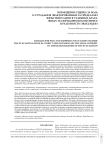
Статья научная
There have been many evacuees suffering from the accident at TEPCO's Fukushima 1st Nuclear Power Plant (NPP) since 2011. The evacuation zones have been set up by the government according to the level of radiation dose. The Nuclear Damage Dispute Review Panel published interim guidelines with regard to these zones. Normally, the evacuation zone and the compensation are completely different (fighting the widespread damage and the invisible fear of radioactive materials). However, when awarding damages, the government relied these interim guidelines. This made a division among victims of the Fukushima Accident. And this system has resulted in a relief gap between evacuees; relief gap means between residents living in areas covered by the interim guidelines for compensation and the rest of the population. This article will focus on a case in which the court awarded compensation for evacuees according to a different standard than the interim guidelines (legal interests specific to the Fukushima Accident). As a result the courts have recognized compensation more widely than the interim guidelines. In particular, it is remarkable that the court affirmed compensation for voluntary evacuees. The negligence of TEPCO and the consideration on the possibility of increasing the amount of mental damage are main focused in NPP accident cases in this study.
Бесплатно
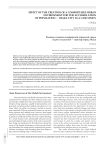
Статья научная
Modern cities, having suffered from the bitter experience of pollution which caused population outflow over many years, began to create comfortable urban environments in order to encourage the settlement of people, which serves as the source of urban vitality. This study clarified the effectiveness toward this end in order to verify both quantitatively and qualita tively the achievement resulting from the creation of a comfortable urban environment in the case of Osaka city, by intro ducing environmental indicators. It thereby demonstrated that populations have been reaccumulated at the center of modern cities, which have become more convenient and comfortable.
Бесплатно
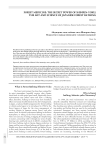
Forest medicine: the secret power of shinrin-yoku. The art and science of Japanese forest bathing
Статья научная
We all know how good being in forests can make us feel. We have known it for millennia. The sounds of the forest, the scent of the trees, the sunlight playing through the leaves, the fresh, clean air in the forests - these things give us a sense of com fort. They ease our stress and worry, help us to relax and to think more clearly. Being in forests can restore our mood, give us back our energy and vitality, refresh and rejuvenate us. In Japanese, we have a word for those feelings that are too deep for words: shinrinyoku or forest bathing. In this article, I will let you know the secret power of the forests through shinrin-yoku/forest bathing.
Бесплатно
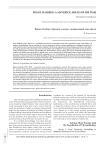
Franz Halberg: a maverick ahead of his time
Статья научная
Franz Halberg (1919-2013) was a remarkable man and an exceptional scientist. He is regarded by most as the «father» of modern chronobiology. Having realized the critical importance and farreaching implications of biological rhythms, he undertook the tasks of (a) documenting their ubiquity at all levels of organization; (b) developing methods for their objec tive and quantitative characterization; (c) uncovering their rules of behavior and mapping a broad time structure of inter acting multifrequency rhythms; (d) providing the nomenclature; and (e) paving the way for important applications in medicine and biology more generally. By adding «time» to the existing body of knowledge, Halberg raised the homeostatic curtain of ignorance, thereby fundamentally changing our view of physiology. By insisting on an inferential statistical foundation, a microscopy in time was born. By adding a telescopy in time with a methodical scrutiny of nonphotic and envi ronmental influences on biota, chronomics flourished under his leadership. Herein, we review key ideas that led Halberg to build the new disciplines of chronobiology and chronomics.
Бесплатно
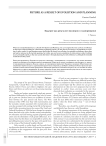
Future as a result of evolution and planning
Статья научная
When one comprehends 'Future as a Result of Evolution and Planning', one can recognise that one can have an influence on the future without falling for a determinate of planning. Society can not plan its own future; it is dependent on evolution. In other words, it is not planning reason that decides the future, but evolution. An equitable evolutionary theory does not lead to reticence in all practical questions, but rather, one can be more considerate in what actions to take. Evolution occurs principally openly, so that one cannot determine it through planning, but only influence it, although the intended results do not always arise.
Бесплатно


